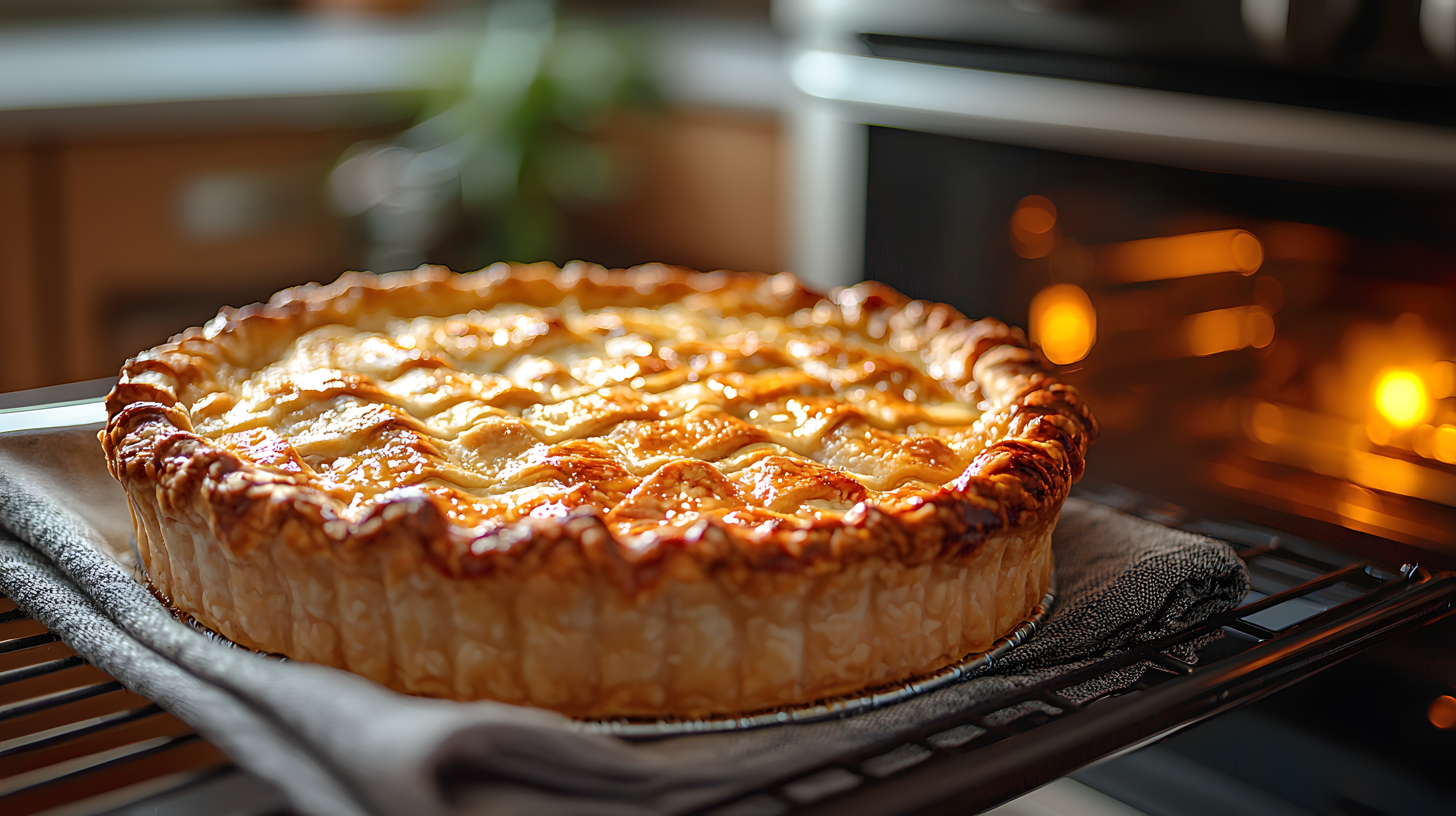Both puff pastry and pie crust are beloved for their flaky textures and rich flavor—but they’re not the same thing. Whether you’re making a fruit tart, savory hand pies, or classic apple pie, it’s important to understand the key differences between these two foundational doughs.
Let’s break it down and learn how to make a basic homemade pie crust with just four ingredients!
—
1. The Basics: Puff Pastry vs. Pie Dough
Feature Puff Pastry Dough Pie Crust Dough
Texture Flaky, airy, many layers Tender, slightly flaky
Butter Distribution Folded in layers (laminated) Cut into flour
Prep Time Long – requires folding and chilling Short – mix, chill, roll
Use Cases Croissants, turnovers, palmiers Pies, quiches, pot pies
Rise Rises due to steam between layers Slight puff, but mostly flat
—
2. How Puff Pastry Dough Works
Puff pastry is made by creating dozens of layers of butter and dough through a process called lamination. The dough is folded multiple times, with butter trapped in between. When baked, the butter melts and releases steam, puffing up the dough and separating it into crisp, airy layers.
Time-Intensive: Making true puff pastry can take several hours, as the dough needs to chill between each fold.
—
3. How Pie Crust Dough Works
Pie crust is made by cutting cold butter into flour, creating small pockets of fat. When baked, these pockets melt and leave behind little gaps in the dough—this gives pie crust its tender, slightly flaky texture.
It’s much faster and easier than puff pastry, and ideal for both sweet and savory baking.
—
4-Ingredient Homemade Pie Crust Recipe
Here’s a simple, tried-and-true pie crust recipe that yields a tender, buttery result every time.
Ingredients:
2 1/2 cups all-purpose flour
1 cup (2 sticks) cold salted butter, cubed
6–8 tablespoons ice water
1 tablespoon sugar (optional for sweet pies)
—
Instructions:
1. Combine flour and sugar (if using) in a large bowl.
2. Cut in the butter using a pastry cutter, fork, or your fingers until the mixture resembles coarse crumbs (pea-sized pieces of butter are okay).
3. Add ice water 1 tablespoon at a time, gently mixing until the dough just comes together. Avoid over-mixing.
4. Divide dough in half, flatten into two discs, wrap in plastic wrap, and chill for at least 30 minutes.
5. Roll out and use as needed for your favorite pies, quiches, or tarts!
Tip: Keep everything cold—the key to a flaky crust is preventing the butter from melting before baking.
—
So, When Should You Use Each One?
Use Puff Pastry when you want a light, multi-layered crunch—perfect for cheese twists, napoleons, or savory tarts.
Use Pie Dough when you need a sturdy base that still melts in your mouth—ideal for apple pie, chicken pot pie, and quiche.
—
Final Thoughts
While they both rely on flour and butter, puff pastry dough and pie crust dough are very different in technique, texture, and use. Pie crust is beginner-friendly and versatile, while puff pastry is more advanced but delivers a dramatic rise and crisp.
Both are worth mastering—but if you’re just starting out, a classic pie crust is the perfect place to begin!

